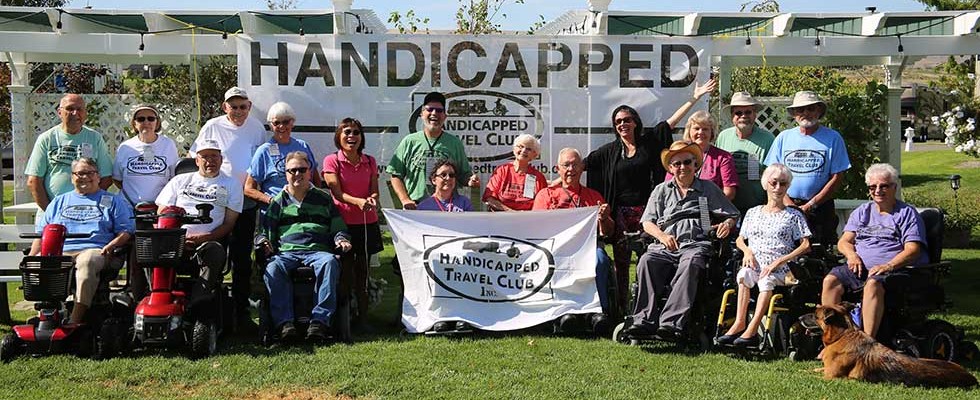
The Handicapped Travel Club has one motto: get out and live (GOAL).
“Don’t sit in your home and not have the fun you could have when you go and travel,” explains Barbara Gratzkr, the group’s public relations committee chair. “It makes you feel better about yourself and gives you something to look forward to.”
Founded in 1973 in Arcata, California, the Handicapped Travel Club (HTC) has spent nearly 50 years advocating for more accessibility during travel for those who are wheelchair users. The organization’s original founders—five couples from California and Texas—met camping and started the club to share information.
Today, the club has members across the country and holds an annual rally. These five- to six-day events include speeches, wheelchair races, karaoke, food and RV open houses so participants can see the accessibility customizations other members have made.
“We bring away such joy from the rallies looking at these people who have overcome so many issues,” Gratzkr said. “We’ve had members whose wives have had strokes and couldn’t move, and they’ve put a ceiling lift in and put 150,000 miles on their RV taking their wife all over the country.”
Barbara and her husband, Bill, the former president and now a regional director, have been involved in the club since 2007, after their neighbors told them about an accessible RV they saw while camping. Barbara was using a wheelchair following complications from a polio diagnosis. The discussion led the Gratzkrs to traveling the country together and camping—something they previously thought was not possible.
“We didn’t know that (experience) existed, and that’s why we’re trying to spread the word to people,” Gratzkr said.
Adapting for Access
Over the years, members have worked with state and national parks to improve accommodations for disabled campers, like wider walking paths and beach mats. They have worked with the U.S. Access Board to make guidelines for federal and state parks.
The club has also focused on making campsites more accessible, suggesting concrete paths to water, sewer and electric hookups, accessible bathrooms, sites that can accommodate a wheelchair lift and similar adjustments. Accessibility improvements do not need to be big: The Gratzkrs offered feedback on one campsite bathroom because one of the doors on the accessible stalls was backward, making use difficult for a person in a wheelchair.
“(Campgrounds) are always very receptive. They just want to know how and what to do,” Gratzkr says.
Making an RV or motorhome mobility friendly can include modifications like making sure the aisle is wide enough for a wheelchair, lowering countertops, creating openings under sinks for wheelchairs to fit under, adding a remote to control the lift and door, or putting buttons and controls lower on the wall. HTC members can spend between $100,000 and $150,000 customizing their RVs and motorhomes.
Of the organization’s recent accomplishments, one has been getting the club fully integrated onto its website (handicappedtravelclub.com) and connected through social media, where its Facebook group has more than 1,000 members who share travel photos, RV customizations and personal successes with each other.
The HTC encourages people with disabilities and their families to travel, to meet and to share information on making RVs accessible for the disabled.
“People who join our group will find the warmth and understanding of our HTC family, as many have over the years ...” the organization says. “We take a lot of pride in our club.”
Evi Arthur is a freelance writer for HomeCare.
